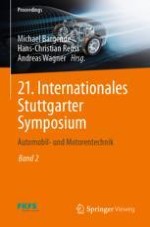2021 | OriginalPaper | Buchkapitel
The Increasing Importance of Particles, Volatile Organic Compounds and Ammonia in Future Emissions Regulation
verfasst von : Nick Molden, James Hobday
Erschienen in: 21. Internationales Stuttgarter Symposium
Verlag: Springer Fachmedien Wiesbaden
Aktivieren Sie unsere intelligente Suche, um passende Fachinhalte oder Patente zu finden.
Wählen Sie Textabschnitte aus um mit Künstlicher Intelligenz passenden Patente zu finden. powered by
Markieren Sie Textabschnitte, um KI-gestützt weitere passende Inhalte zu finden. powered by
Abstract
-
Post-Euro-6 emissions regulation in Europe is an opportunity to simplify and refocus on emerging environment threats.
-
Certain unregulated tailpipe pollutants, such as ammonia, which contributes to secondary particle formation, are candidates for future regulation.
-
Volatile organic compounds are of interest from several angles: vehicle interior air quality and the off-gassing from materials; tailpipe speciation of hydrocarbons including formaldehyde; and off-gassing from tyres.
-
Tyre wear emissions are currently unregulated but are believed to be a growing contributor to air and marine pollution.
-
Emissions Analytics runs independent test programmes that investigate and quantify real-world exhaust, cabin and tyre pollution. Resulting measurements form the EQUA Index database, which is the source of results presented in this paper.
